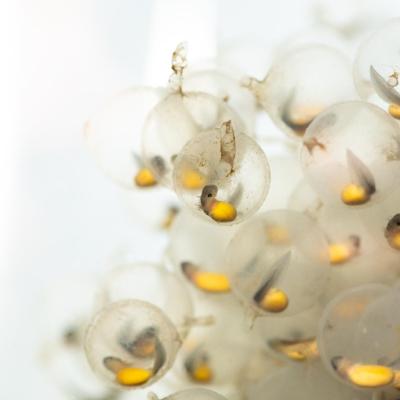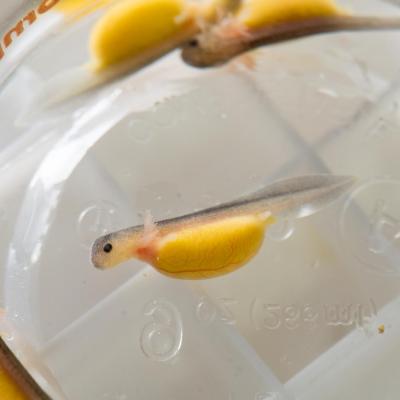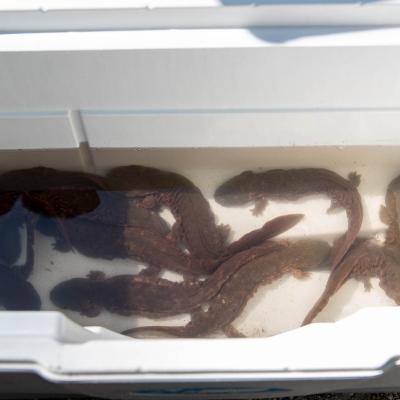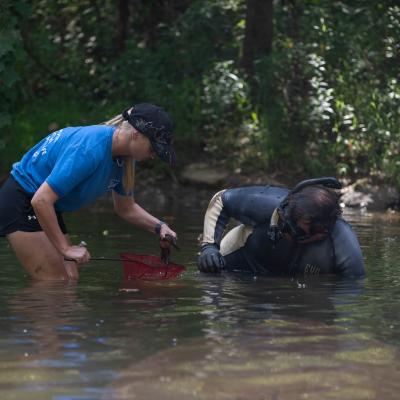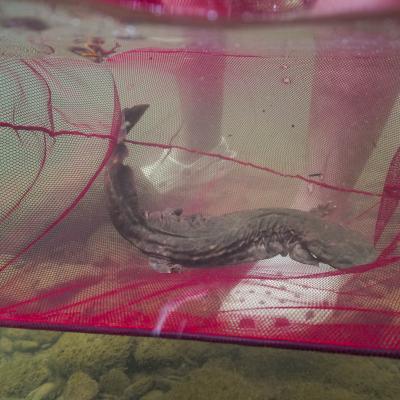Hi there, this is Pete from the Columbus Zoo and Aquarium. Our Zoo team has been busy doing some important work with the Ohio Division of Wildlife and other partners to conserve our native populations of Eastern hellbender salamanders. You might be asking yourself, âSo, whatâs a hellbender?â Well, the hellbender is North Americaâs largest amphibian by weight, growing up to 4 pounds and stretching over 2 feet in length! Hellbenders have a slick protective coating of slime covering them from which they get the fun nickname âsnot otter!â These amazing salamanders are entirely aquatic animals that live in Ohio streams that are tributaries of the Ohio River. Their range also includes other states near the Appalachian Mountains, from New York to Alabama, as well as parts of Missouri and Arkansas.
We know that the number of hellbenders in Ohio has decreased drastically over the last several decades, mainly due to habitat degradation caused by soil erosion which causes sediment to build up in streams. Pollutants entering our streams also play a role in their decline. This year, 2022, marks the 10th year that the Columbus Zoo has partnered with the Ohio Division of Wildlife to release young, zoo-reared hellbenders into stream habitats where environmental conditions have improved enough to support them.
During the last week of August, we released 90 three-year-old hellbenders, bringing the total number reared and released by the Columbus Zoo to 800 animals since 2012! Hellbenders live in cavities under large rocks in the stream, where they are protected from predators and can forage on aquatic invertebrates such as crayfish and insect larvae. Several biologists, including myself, locate appropriately sized cavities under submerged boulders that would make good homes for these youngsters to release our hellbenders. Zoo staff and neighbors who live near the stream introduce a hellbender into the space under a rock. Since hellbenders naturally like dark, tight spots, they usually squeeze right into their new home.
The rearing process for hellbenders at the Columbus Zoo begins with eggs that hellbenders laid in a stream brought to the Zoo and allowed to hatch here. This process dramatically increases the survival rate of larval hellbenders beyond what it would be if left under natural conditions. While the hellbenders are being cared for at the Zoo, we put a Passive Integrated Transmitter (PIT) tag into each one so we can later identify it by scanning it with a PIT tag reader. The PIT is similar to the microchip tag that your dog or cat may have for identification purposes. We know from research conducted after earlier releases that annual survival is good and that, over decades, we should be able to rebuild hellbender populations with this reintroduction process.
Do you want to help us to keep hellbenders and other wildlife happy and healthy in their streams? There are a few actions that you can take at home that will make a significant impact in improving the water quality of creeks and rivers in your area. Firstly, planting native plants in your yard is a great way to help filter out sediment, fertilizers, and pesticides, before they are carried into storm drains by rushing rainwater. Also, if you are near a creek or river, please avoid the temptation to pick up or move rocks from the streambed. Those rocks are vitally important habitats for hellbenders and many other aquatic animals. Disturbing the rocks destroys their shelters and disrupts their ability to find food. Taking these simple actions will make you a Hellbender Hero! Thanks for reading along with me today!

